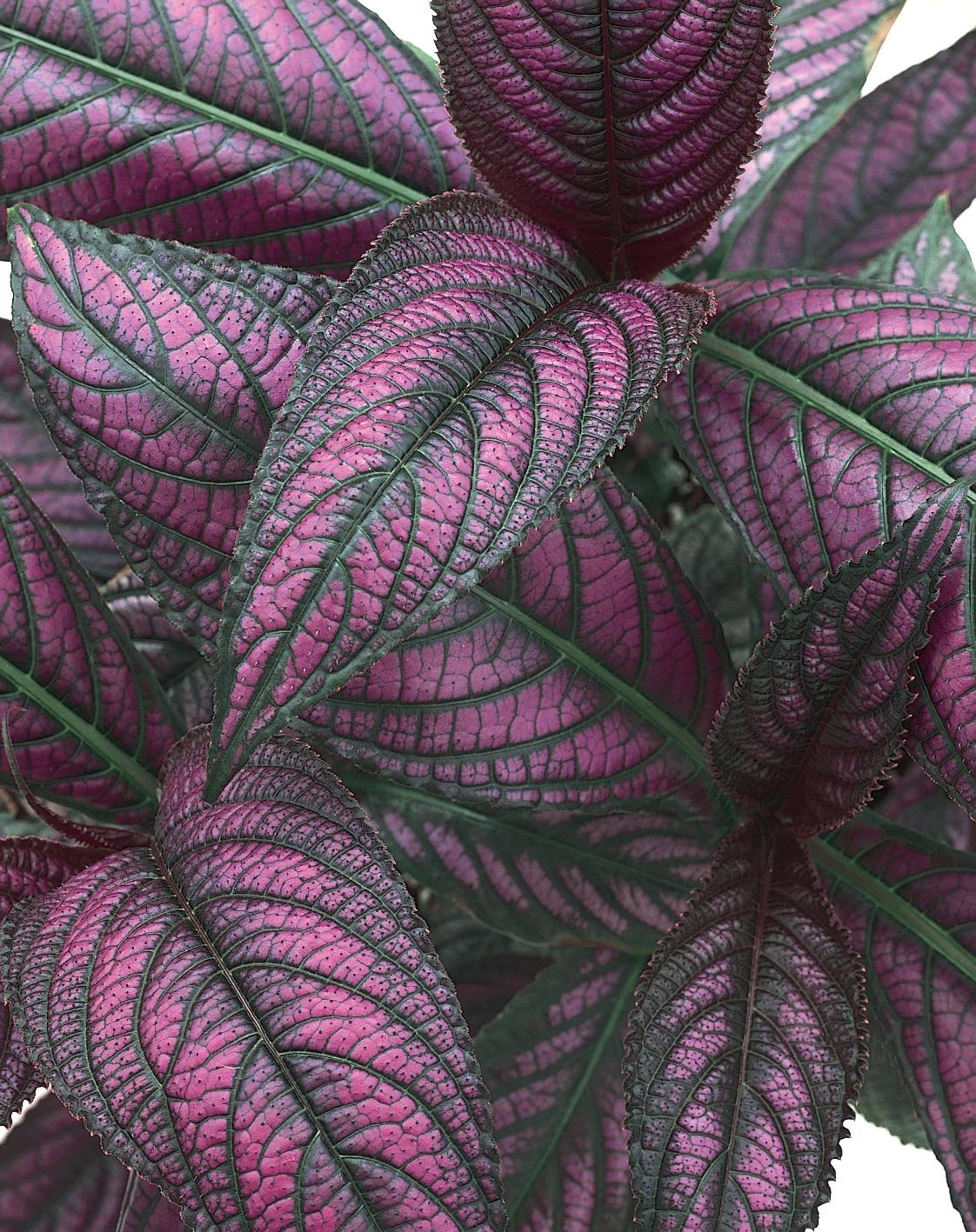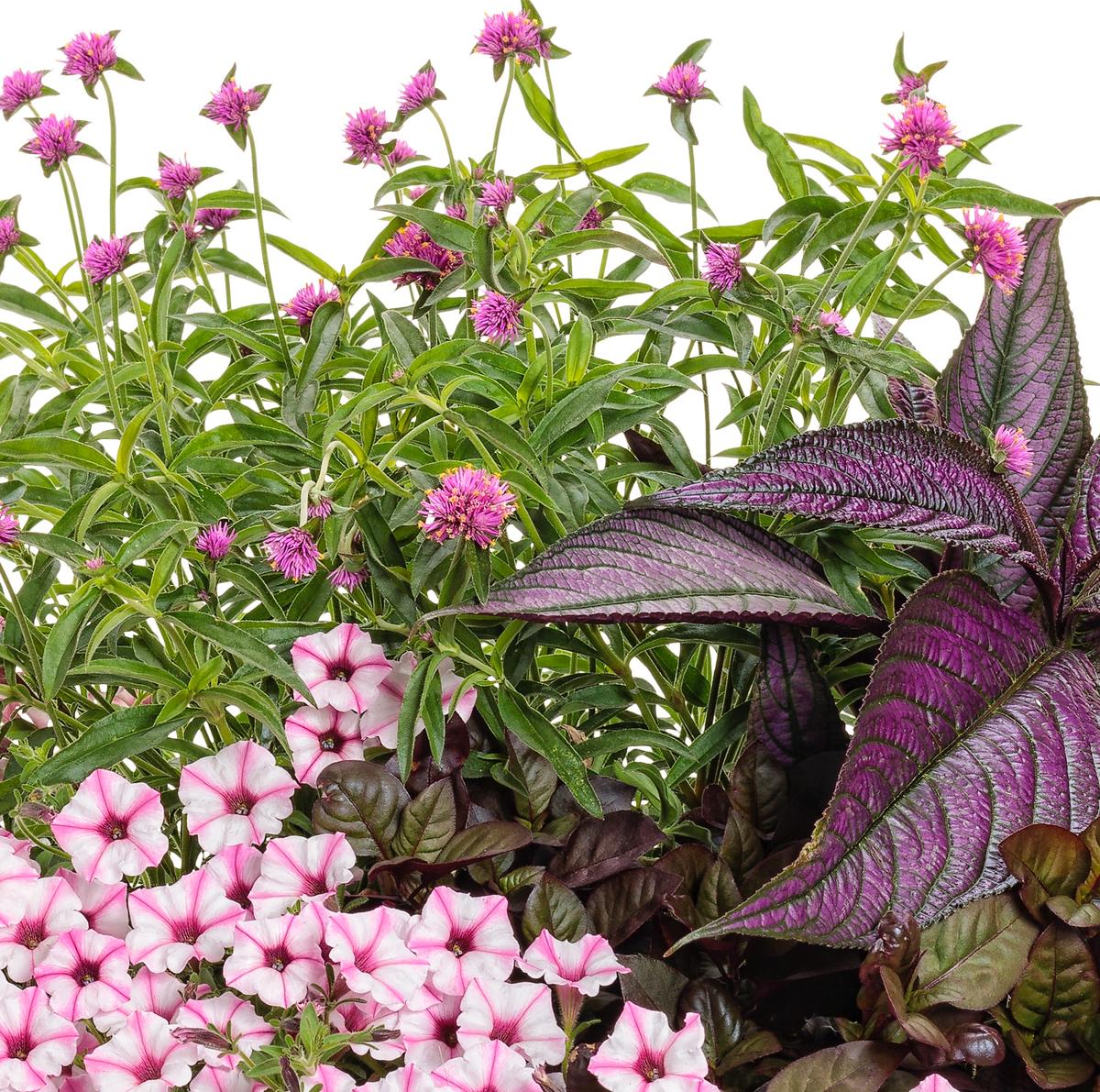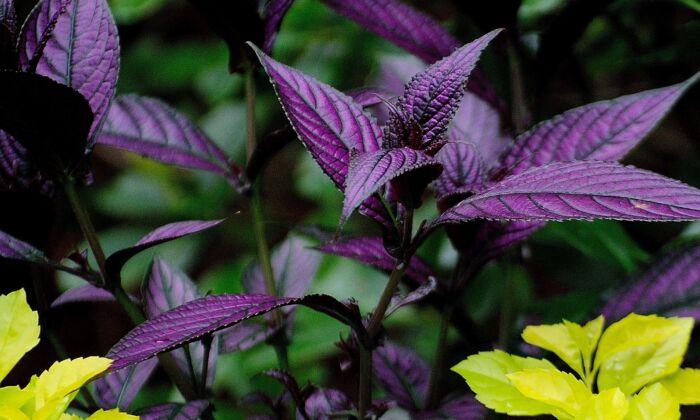Recently I stumbled across a plant recipe called “This is the Life.” Not only was it a collection of some of my favorite plants, it was a wake-up call to an old favorite: the Persian Shield. Known botanically as Strobilanthes dyerianus, it is native to Myanmar and has 8-inch-long iridescent leaves in shades of purple, lilac and pink with purple-maroon on the undersides. If those colors aren’t awesome enough, the foliage looks as though it has a light coat of silver electroplated to the leaf.
It has been around for a while, even in Victorian times, but it kind of slips to the back burner, depending on the whims of producers. It has been selected as an Athens Select plant of the University of Georgia and has won Top Performer and as well as Best of the Zoo at the Cincinnati Zoo and Botanical Garden. Thankfully it has secured its position as part of the Proven Accents section of Proven Winners, which is where you’ll also find all the new ornamental sweet potatoes.
The Persian Shield prefers well-drained, organic-rich soil. I rarely see it in full afternoon sun looking its best in the South. I love planting it in morning sun and afternoon shade to keep its brilliant colors always photo-worthy. This spring, wait to plant until all danger of frost has passed, then space plants on 18- to 24-inch centers. I think we may finally be safe in my part of Georgia. The plants should reach close to 3 feet in height and are really considered maintenance-free. Don’t be afraid to pinch if needed to keep plants bushy.
This is not exactly a drought-tolerant plant. On the other hand, those in our display garden when I was with Mississippi State endured much more than I ever believed possible. Keep the plants uniformly moist throughout the growing season. This is a tropical plant that likes summer humidity and performs well in heat. Keep it growing vigorously by fertilizing monthly with a light application of a slow-release fertilizer. My choice would be something like a 17-5-17 with minor nutrients, but it’s no big deal; just make sure to use a slow- or controlled-release blend.

Almost everyone would think of Persian Shield as annual planting, much like coleus. It is, however, considered a perennial in zones 9-11, and ours came back several years in zone 8. Don’t expect it, but celebrate if it does. Many find it hard to believe that Persian Shield is in the Acanthus family (Acanthaceae) with relatives like Mexican petunia, Shrimp Plants, Firespike and even Thunbergia that we grow as vines.
There are some great combinations to plant with the Persian Shield, which is where I started with “This is the Life.” The recipe features Truffula Pink gomphrena, Supertunia Mini Vista Pink Star, Plum Dandy alternanthera, also from the Proven Accents section, and of course the Persian Shield. You can also find eight more recipes to choose from.

I love how they look with large bananas or in combination with lime green or chartreuse foliage. The purple foliage really contrasts with these colors. Another great choice would be to use violet- or white-colored impatiens like those found in the new Soprano series.
Every week someone asks me which plants deer don’t like. The reports say this is one plant deer will leave alone, so let the celebration begin. If you are looking for that special plant to make your friends and neighbors go “holy wow,” the Persian Shield will do just that.






